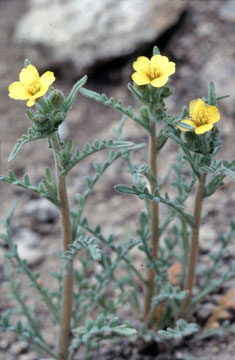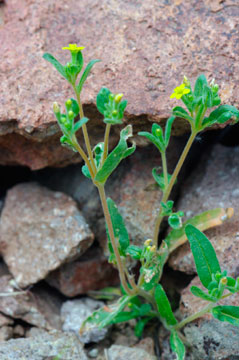
Ten-petaled blazing star, Mentzelia decapetala (Pursh) Urban & Gilg ex Gilg (right). The large, ten-petaled (decapetala) blazing star is not a flower easily missed. It blooms late in the day, is moth- pollinated at night, and closes early in the morning. During the rest of the day the plants look like tall, rough-leaved weeds. The ten- petaled flowers include five true petals and five inner modified stamens (“staminodes”). Lewis and Clark collected this new-to-science plant in August, 1804, near today’s Homer, Nebraska. Primarily a Great Plains plant, it grows from the Mississippi River west to Idaho where it occurs in scattered locations, growing on south-facing gravelly slopes to fairly high elevations.


Nevada mentzelia, Mentzelia dispersa S. Watson (right). The two plants shown on the left and right, are so unlike the gaudy mentzelias shown above that it is hard to believe that they are in the same genus. The Nevada mentzelia differs from the somewhat similar white-stem plant in being less hairy and having entire (no lobes), lanceolate leaves; their small flowers are rather similar. This plant has much the same distribution as the other, although it does not extend into the states of the Southwest. It too grows as high as the montane zone in our mountains.
